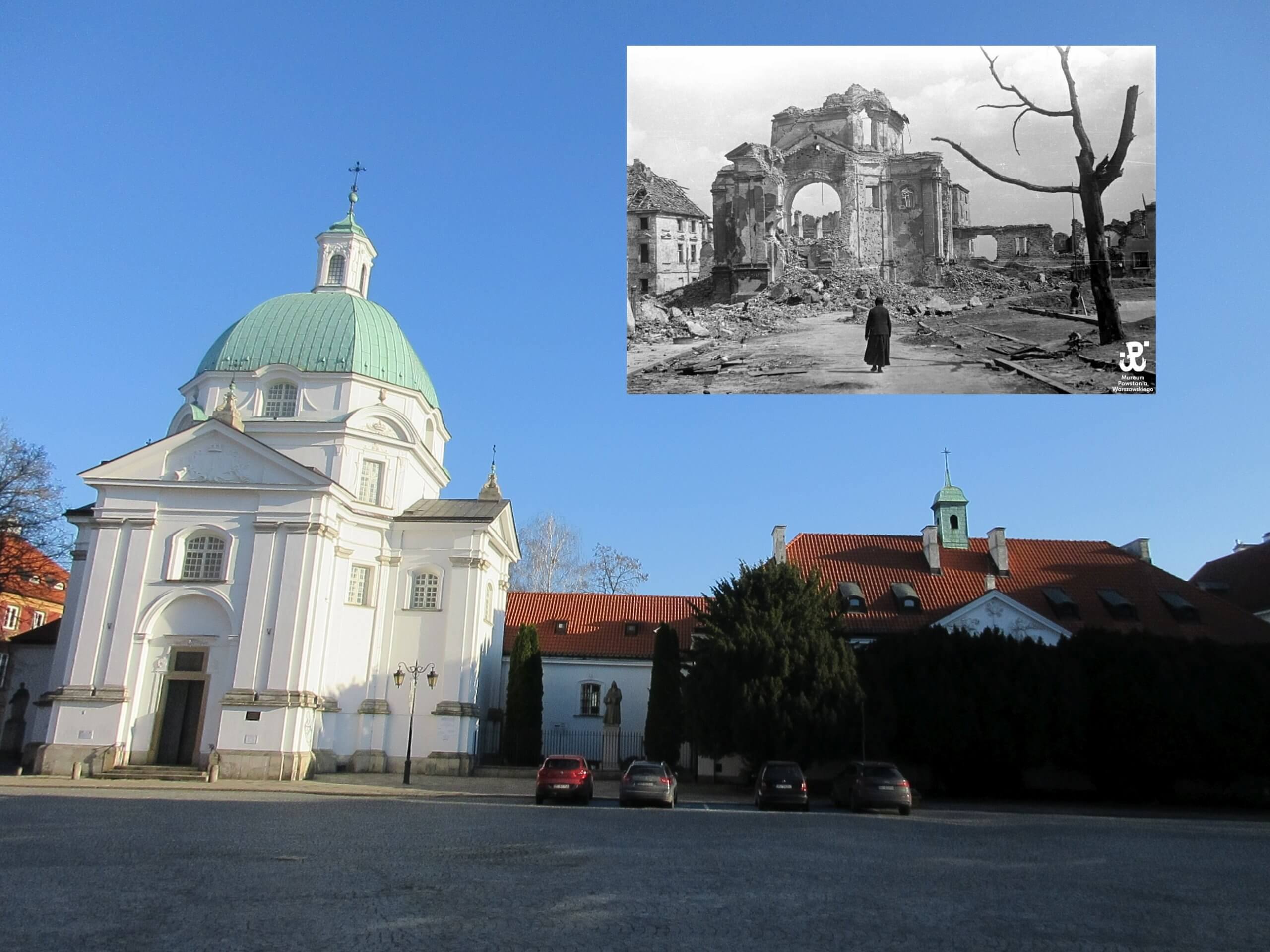The following true story, written by the nuns of the same monastery (rebuilt after the War), has until now been known almost exclusively in Poland. Thanks to an anonymous monk’s translation, it can now be shared with an English-speaking readership. It concerns the Benedictines of Perpetual Adoration in Warsaw, who gave their lives explicitly for Christ and for Poland. I had the immense privilege of visiting this monastery and speaking to the Mother Prioress and one of the other sisters during my short time in Warsaw in November 2021. While there, I was shown the crypt of the church and the commemorative plaque of the 35 nuns. The photos are my own, except for the historic black and white photos. The color photos show today’s monastery, rebuilt more or less the same as the old one.—Peter Kwasniewski
The day of the Warsaw Uprising—August 1, 1944, in the fifth year of the German occupation—was a new page in the history of the martyrdom of the Polish nation. The darkness of terror remains in the memories of all who survived: the view of a ruined capital city, rows of graves, and gaping wounds in the hearts of those who lost loved ones. Many lives were brutally ended; outstanding individuals sacrificed their lives for Warsaw and for Poland. Our cultural heritage had fallen apart; monuments of art, as well as churches, lay in ruins. Warsaw’s Old Town as “the theatre of war” suffered the most.
The beautiful monumental church and monastery that was the home of the Benedictine Nuns of Perpetual Adoration was not spared. In its ruins, on August 31, 1944, died thirty-five nuns, four priests, and about a thousand civilians. At least seventeen of the nuns who were killed on that day had previously made an offering of their lives for the cause of our Fatherland, having approached the Mother Superior and asked her permission to remain in prayer in a place where they would face certain death.
The martyrs’ death of almost this entire religious community, and in such circumstances, deeply shocked our society, and left us terror-stricken. Word of the event echoed through the country. Even now, it is remembered in the press and in literature as one of the heroic moments of the combat of Warsaw’s Old Town. We have been asked many times to reveal more details of the “road to Calvary” by which our Benedictine Sisters went to their sacrifice. We would like to respond to those requests by offering this short account of the events to all our friends, and to those who share our religious and patriotic beliefs and sentiments.
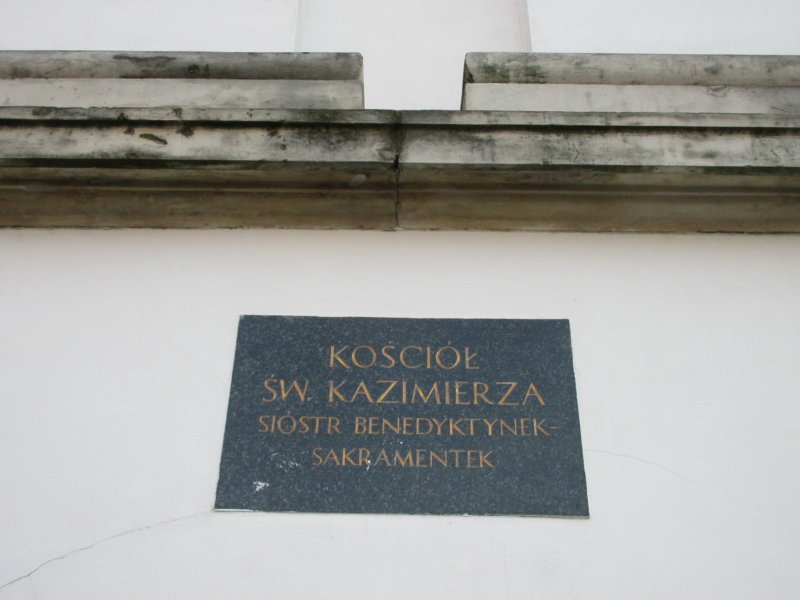
Memories of a Nun Who Survived the Bombing of August 31, 1944
When news of the Warsaw Uprising reached us within the walls of the monastery’s enclosure, our hearts were deeply moved. We gathered at the feet of Jesus hidden in the Most Blessed Sacrament and asked Him for help and protection in our capital city’s struggle for freedom. The future of our monastery and church were also dependent on the outcome of the Uprising.
Mother Prioress allowed refugees who had lost their homes, from Rybaki Street and the Wola section of the city, to take refuge in the cellars of the monastery and in the crypt under the church. The Sisters took care of the people in all their needs. The Polish Command of the Uprising also petitioned Mother Prioress to lift the monastic enclosure, which had been observed for 250 years, and to provide shelter and care for wounded soldiers. Immediately, a Sister from our infirmary began caring for these soldiers. The lifting of the enclosure also enabled a connection between Rybaki Street and the New Town Square. The once quiet corridors were now filled with the sound of the footsteps of messengers running through the monastery’s gardens to the Vistula River. This led to furious attacks and unceasing fire by the enemy. The Sisters, with supernatural courage, bravely kept watch on our roofs and in our attics, constantly putting out the fires that were ignited. The situation grew worse after part of the monastery started to be used as a military hospital.
When the Germans learned that our Sisters were supporting the Uprising, they decided to destroy the church and the monastery. On August 11, six so-called ‘wardrobes’—incendiary bomb carriers, of new construction and of unprecedented strength—fell on us from the Praga section of the city. The monastery garden was completely crushed. The walls shook in their foundations. The impact was so fierce that it threw the Sisters to the ground, ripping their habits apart. Aware of the threat, the chief medical officer ordered the evacuation of the hospital into the cellars. There, among the graves of the deceased Sisters, an operating theatre was set up. The wounded arrived constantly, and in ever-increasing number. The groans of the wounded, the stifling fumes of the disinfectants, the lack of fresh air, the arrival of new refugees, and so many people in panic and terror made the atmosphere almost unbearable.
In the middle of all this, the Father Provincial of the Pallotines and Father L. Hrynaszkiewicz, S.J. sat in a corner of the cellar until late in the night to hear the confessions of all who needed spiritual help: nuns, civilians and soldiers.
Incendiary bombs were dropped on the monastery church as though hell itself had mobilised all its diabolical powers to destroy the place built for God’s glory. Such furious attacks on the walls of the temple, where reigned He who is Peace, Light and Love, could be explained only by the Satanic possession of the enemy.

The church’s tower was at the point of collapse. The chief medical officer, therefore, again ordered evacuation; this was yet another form of martyrdom for the wounded and the paramedics, who had to leave this haven, where they had at their disposal a kitchen, a pharmacy and all sorts of equipment.
Mother Prioress and the Sisters moved to the cellars under the novitiate part of the monastery. Some Sisters kept watch in the attic, extinguishing fire after fire, and pouring water on the church’s floor as pieces of the burning ceiling fell down. The copper dome, with its cross pointing heavenward, was burning red hot: a splendid view in the night, but frightful and threatening. Glowing above the city, where the selflessness of heroism fought against the horrors of evil, it may well have been a portent, a prophetic sign of the imminent martyrdom of the Sisters. It was a reminder that this horrifying cataclysm was the result of the failure of the living to grasp the meaning of the Cross. It was also a sign to so many embittered and desperate people, showing them where to find hope and salvation: a proof that one can triumph while being defeated.
The threat of complete and utter devastation loomed over the monastery. Nevertheless, the Sisters remained calm and were deeply convinced that, in God’s plans, their suffering had purpose and meaning. Before our eyes, one wing of the monastery after another, pulverised by shells of the heaviest calibre, became a pile of rubble. We had to leave these walls where, for 250 years, souls had found their nourishment in prayer and learned, by grace, how to live for God alone.
The Chaplain of the monastery, carrying the Most Blessed Sacrament, followed by Mother Prioress and the rest of the Sisters in small groups, made their way under the constant gunfire to the Church of Saint Hyacinth. This sorrowful procession reached the church’s undercroft, where the Sisters of Charity looked after us with true sisterly love. In the church—it had not yet been destroyed—the Sisters spent almost every minute in adoration of Jesus in the Most Blessed Sacrament and at the tomb of Saint Andrew Bobola in the crypt. There remained still ten nuns in the ruins of the monastery, keeping guard over the furnishings of the church. The novices, together with their Mother Mistress, did not want to leave the enclosure, but religious obedience obliged them to join the rest of the community.
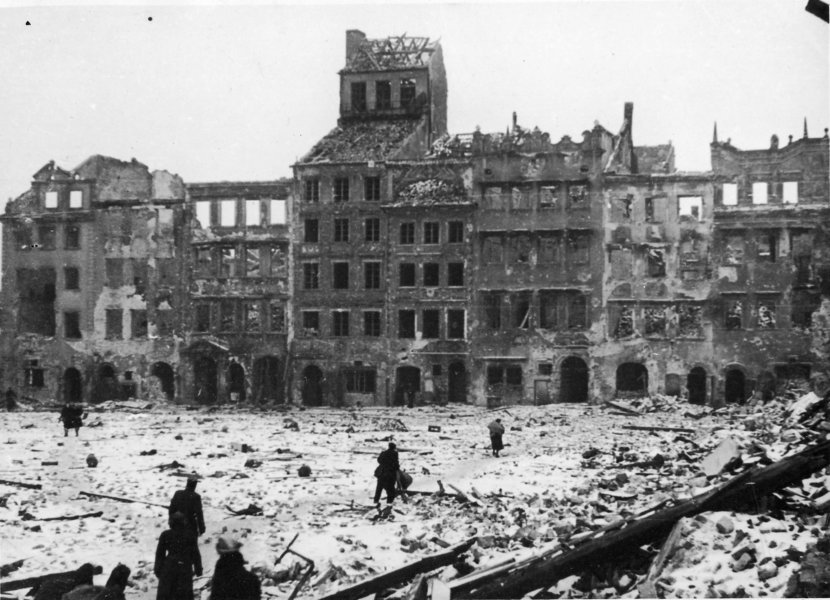
On August 22, Warsaw’s Old Town, with all its monuments and buildings, was totally destroyed. Nothing remained but smouldering ruins. It was no longer safe for the Sisters to stay in Saint Hyacinth’s Church. Remaining there became increasingly risky. It was decided that we should return to the cellars of our destroyed monastery. It was a painful return and a painful sight, but it was no time for mourning. People took refuge in the cellars with us, and we had to take care of them. We cooked for them in big kettles on improvised stoves. The number of refugees was constantly growing. We could cook only at night lest the smoke reveal our underground haven to the spying aeroplanes, and the enemy detect signs of life amidst the dead ruins.
Our supplies were running out and starvation loomed. The situation grew worse in every respect. The sanitation system was destroyed. We were left without a water supply. The Sisters, risking their lives, started going down to the Vistula River to fetch water. The refugees were embittered and exhausted beyond their limits in those horrific days, and, as always in such moments of breakdown and trauma, gave vent to all their nervousness and pain.
Then, the role prepared for us in God’s eternal plan appeared clearly before our eyes. We saw that Divine Providence had gathered us all here and had formed our lives in view of reparation. Even amidst suffering and grief, and under the constant threat of death, the Sisters, sustained by grace, managed to keep calm and peaceful. To a great extent, we attributed this peace to the presence of four priests and the opportunity given us to participate daily in four Holy Masses. Fortified by Holy Communion each day, we Sisters, fragile human beings, were able to forget ourselves. We united ourselves to Christ’s unbloody offering in the Holy Sacrifice of the Mass. We meditated on His Passion, dwelling especially on His Agony in the Garden of Olives, and related it to all that was happening before our eyes. All of this raised our minds and hearts to the Pierced Heart of Jesus, there to find salvation, to obtain help, and to make reparation for the evil that was prevailing mightily all around us, and spreading everywhere more and more.

Looking at the passing worth of all that was destroyed, and of the things in which modern man took pride, we were compelled to focus everything on God, Eternal and Unchanging. Being deeply convinced that any human action would prove ineffective, from the depths of our hearts, we united ourselves to Christ with fervent prayers. We prayed the Divine Office every day. At times, a massive explosion would throw us to the floor and cover us with rubble and dust, but we would immediately get up and continue our prayers with loud voices, that the words [of the Office], so full of faith and hope, might vie with the roar of missiles, bullets, and aeroplanes.
Day and night, according to our Rule, we persevered in perpetual adoration of Jesus in the Most Holy Sacrament of the Altar. At the feet of Christ—the Offered One—we found strength and consolation, but deep concern for the fate of our Fatherland was calling us to a total annihilation of ourselves. Our supplication now was not that the Uprising would be successful, but that souls would be able to rise up, that quarrelling human hearts would begin to beat in unison. And that, among the wreckage and ruins, people might find a path to God, and see that He alone is man’s indestructible bulwark.
In addition to the three monastic vows, the Benedictine Nuns of Perpetual Adoration vow themselves to live in a state of victimhood, united to Jesus in the sacrificial offering of His death. The perpetual adoration brought them, through all these events, to a complete identification with Jesus Who, in the Most Holy Sacrament of the Altar, remains forever the spotless Victim offered to God. One after another, Sisters—fully conscious of the significance and consequence of their act—sought the consent of the Prioress to offer themselves as sacrificial victims. Going before Christ, hidden in the Sacred Host, they offered themselves to the Justice of God in a sacrifice of reparation to obtain mercy for a tormented Poland.
Meanwhile the Germans ordered us to leave the ruins where only death awaited us. We contacted the Polish Command and, as a result, elected to stay, completely convinced that our almost inevitable death was the Will of God. Now, in this decisive moment, what mattered was to prepare for death. Deep recollection, ceaseless prayer, and daily Confession became the essential preoccupation and focus of all the Sisters.
August 31, 1944 fell on a Thursday. For the Benedictine Nuns of Perpetual Adoration, Thursday is the day beautiful above all others because, each week, it recalls the Institution of the Most Holy Eucharist. We prayed Vespers and Compline, as usual, at three o’clock in the afternoon, untroubled by the noise of the aeroplanes circling above us. In spite of the bombs that were falling, we began the verse, ‘Keep us, Lord, as the apple of thine eye. Protect us under the shadow of thy wings.’[1] Then came the wonderful prayer: ‘Visit, we beseech Thee, O Lord, this dwelling . . . and let Thy blessing be always upon us.’[2] The words flowed from deep inside us. Already our hearts were beating with a rhythm more of heaven than of earth. At the end, we sang the antiphon to the Blessed Virgin Mary, ‘Hail Holy Queen . . . turn then, most gracious advocate, thine eyes of mercy towards us. And after this our exile, show unto us the blessed fruit of thy womb, Jesus.’ Could there be a more beautiful prayer in preparation for death?
Then, even the aeroplanes seemed to be silent for a while. With profound interiority the Sisters put on their necks the ropes customarily worn during adoration of the Most Holy Sacrament. By this practice, the Benedictine Nuns of Perpetual Adoration had, for over 250 years, signified their union with the Victim Christ in reparation for sin. The Sisters gathered closely about the tabernacle. There was silence. Silence without so much as a whisper. Silence unbroken even by the murmur of prayer. After so much terror, uproar, and shattering violence there was nought but silence: a preparation for the eternal silence of heaven. It was a silence pregnant with anticipation. Then, all of a sudden, there was a terrible crashing sound followed by darkness. People were screaming. In a single moment the ceiling collapsed, crushing and killing the Sisters huddled close to the Most Blessed Sacrament, and with them about a thousand civilians. At the same time the cellars of the monastery collapsed, burying four priests, and the rest of the Sisters and civilians beneath the rubble.

Dare we call the death of the Sisters a real death? Death is the interruption of life. Death brings whatever was happening to a stop. But here, was this really the case? The Sisters were gathered in adoration at the feet of Jesus in the Most Blessed Sacrament. Was their prayer interrupted? Not at all. They simply passed over into perpetual adoration at the feet of the same Jesus in eternity.
According to a story recounted by inhabitants of Warsaw’s Old Town, shortly after the monastery church collapsed, a flock of white doves was seen flying out of the burning rubble towards heaven. That God allowed some to behold this sight is a mystery. What we do believe without any doubt is that the souls of our Sisters offered in sacrifice flew, pure and bright, straight to the throne of God.
There is a saying, proved true once again, that, ‘the blood of the martyrs is the seed of new life.’[3] Out of the entire monastic community only the Mother Prioress and ten Sisters survived, and this by a miracle. It was precisely the number of Sisters needed to begin life afresh. Supported by the grace of God, the Sisters set about raising their destroyed monastery from the rubble. New vocations presented themselves, even among the ruins. Again, chants of joy and adoration came to flower on the lips of souls consecrated to God alone, rising heavenward. The words of the Psalmist, ‘Protect us under the shadow of thy wings,’ resounded once again. The souls of our Sisters, now in ceaseless jubilant adoration before the throne of God, are united to our prayers, presenting our supplications to ‘that Father from Whom all fatherhood in heaven and on earth takes its name’ (Eph. 3:15). And Jesus, stretching His arms and pierced hands over the destroyed city of Warsaw, blessed the work begun afresh in His Name: the resurrection to newness of life.
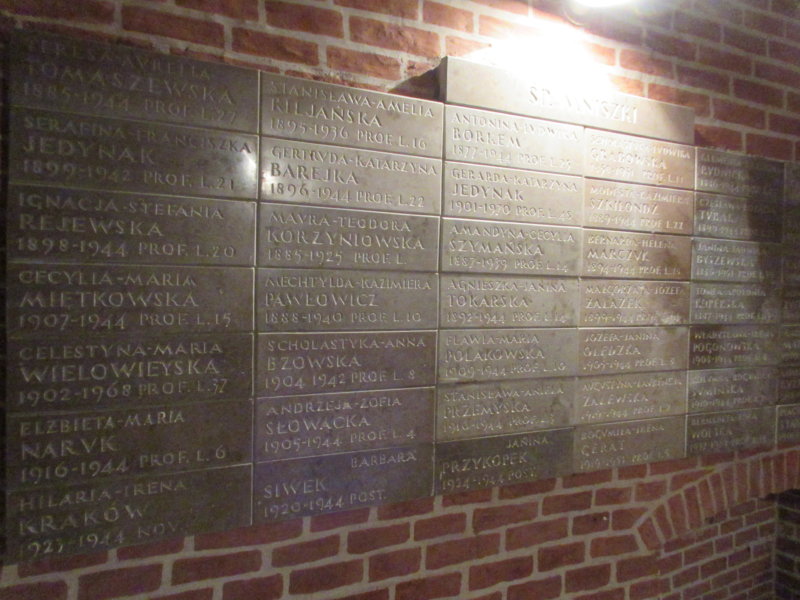
On this wall are listed the victims of 1944
Here follows a list of the 35 Sisters who died in the ruins:
- Sister M. Tomea Koperska, Sub-Prioress and Mistress of Novices
- Sister M. Klara Zdrojewska
- Sister M. Innocenta Załuska
- Sister M. Anna Kowalska
- Sister M. Benedykta Kiliańska
- Sister M. Teresa Tomaszewska
- Sister M. Magdalena Schmitz de Grollenbourg
- Sister M. Antonina Borkem
- Sister M. Klemensa Rudnicka
- Sister M. Alojza Tryc
- Sister M. Gertruda Barejka
- Sister M. Modesta Szkiłondz
- Sister M. Czesława Turak
- Sister M. Joachima Karcz
- Sister M. Ignacja Rejewska
- Sister M. Bernarda Marczuk
- Sister M. Róża Karczewska
- Sister M. Cecylia Miętkowska
- Sister M. Agnieszka Tokarska
- Sister M. Małgorzata Zalazek
- Sister M. Jadwiga Puchała
- Sister M. Flawia Polakowska
- Sister M. Józefa Olędzka
- Sister M. Władysława Pogonowska
- Sister M. Anzelma Matuszczak
- Sister M. Elżbieta Naruk
- Sister M. Andrzeja Słowacka
- Sister M. Stanisława Przemyska
- Sister M. Augustyna Zalewska
- Sister M. Kolumba Sumińska
- Sister M. Katarzyna Kuźmińska
- Sister M. Hilaria Kraków, novice
- Sister M. Barbara Siwek, novice
- Sister Janina Przykop, postulant
- Sister M. Kazimiera Piotrowska, an elderly Sister who, being very ill, died on 22 August 1944 as a consequence of the severe conditions due to the continuous bombing of Warsaw’s Old Town.
And the four priests:
- Father Józef Archutowski, prof.
- Father Michał Rozwadowski, the monastery’s chaplain
- Father Jan Mazerski, SDB
- Father Leonard Hrynaszkiewicz, SJ
May they rest in peace—and, as is highly likely, may they intercede for us in glory!
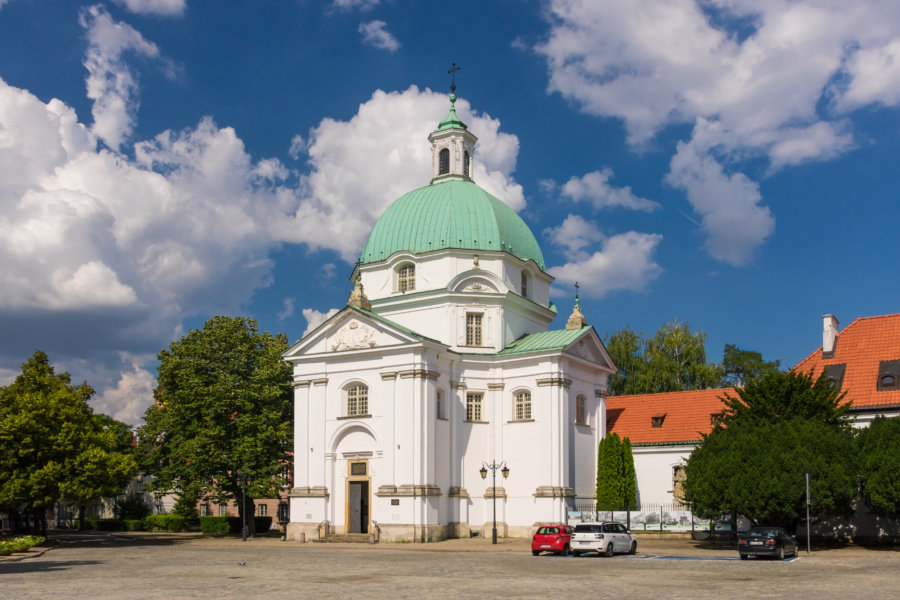
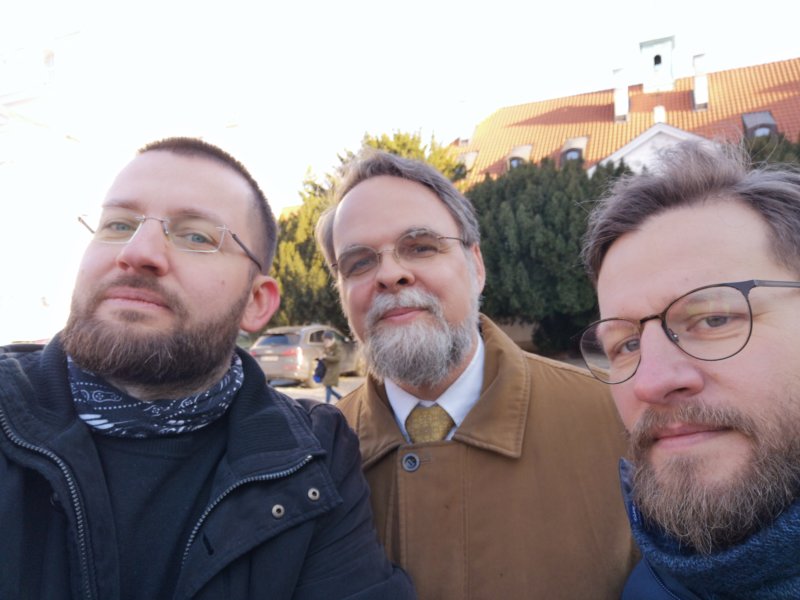
[1] Psalm 16:8. Sung every night at the Office of Compline.
[2] Collect of Compline in the Monastic Breviary.
[3] Cf. Tertullian: ‘The blood of the martyrs is the seed of the Church’ (Apologeticus, L.13).

